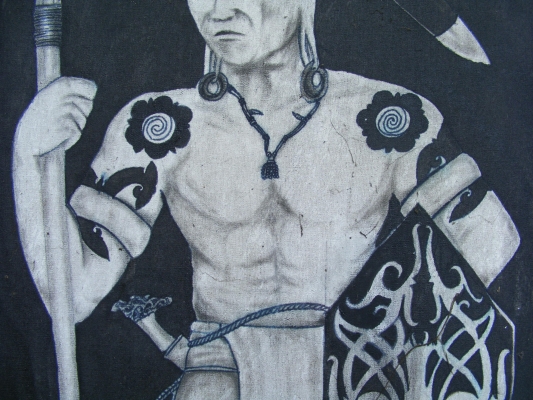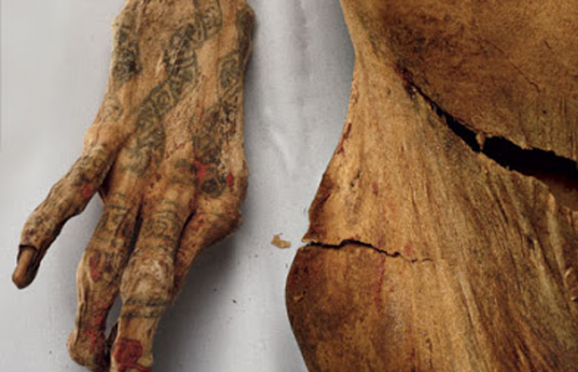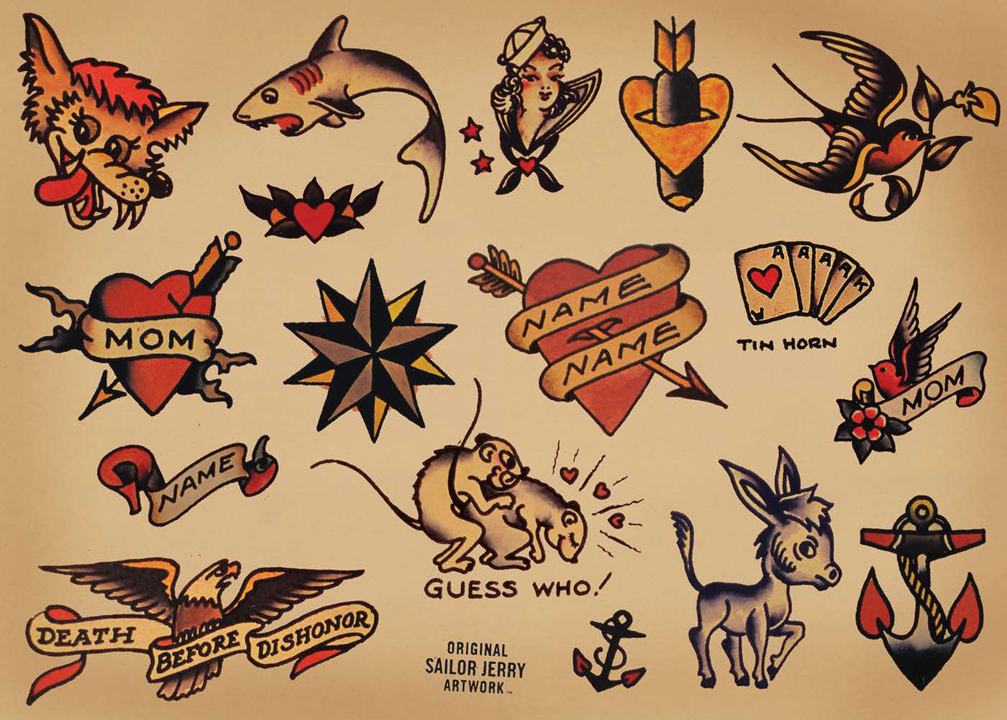From embracing the evolving tradition to deep rooted social stigmas, the question of getting inked always sparks debate. Tangled in modern-day interpretations, it’s easy to forget tattoos have a long, winding history [long before you and I considered getting inked], and have bred very different implications and associations exclusive to their cultural context.
First in Egypt
The earliest evidence of tattooing can be found in the history of ancient Egypt, but it is believed to have originated far earlier. The art form expanded as the Egyptians expanded their turf, changing meaning with travel.

According to National Geographic, when a Tahitian girl reached the age of sexual maturity, her buttocks were tattooed black, a tradition that continues among some today. When in mourning, Hawaiians tattooed their tongues with three dots. In Borneo, natives tattooed an eye on the palm of their hands as a spiritual guide that would lead them to the next life.
The Greeks used it for communication among spies, Dayak warriors used it as a mark of their conquests (and consequently the respect of those who saw it), and Polynesians developed tattoos to mark communities, families and rank. What was once used to mark criminals in Japan developed into a mark of social status (A Brief History of Tattoos).
In Ancient Egypt: Mark your shadiness or protect your baby

Image Source: http://blog-cdn.tattoodo.com/
In ancient Egypt, tattooing seemed to be a female-exclusive practice. It was assumed that the females who were tattooed were of “dubious status”. However, the tattooed women were buried at Deir el-Bahari, an area associated with royals and elites. It turns out one of the tattooed women who had been described as “probably a royal concubine” by the excavators was actually a high-status priestess named Amunet, as they found in her funerary inscriptions.

It is speculated that women might have gotten tattooed during pregnancies to help through the difficulty of giving birth. The patterns and areas in which they were tattooed – largely on the abdomen, tops of thighs and breasts – suggests it may have been used as protection to the growing fetus. In addition, the figure of the household deity of Bes, the protector of women in labor, was placed on the tops of their thighs.
In Native America: Be a man – Endure the pain!
Native Americans practiced the art before modern day tattoo machines existed. Using sharpened bone or rock, they would carve the design into their flesh, using soot or natural dyes to color the wound it made. Different tribes had different reasons: from thinking the tattoo would give them supernatural powers or strength, to the belief that they could emulate the strength of an animal they tattoo on themselves.

The Pe’a, the traditional Samoan male tattoo, was originally called the “malofie”, a term used in the Samoan language to refer to respect. To get this tattoo, you must use handmade tools of bones, tusks, turtle shell and wood, and lay down on mats on the floor. The process can be extremely painful, take anywhere from a week to years to finish, and can only be completed by revered masters of the art and his assistants. (see the modern-day version of it below)
It is a rite of passage for males to endure the pain of the tattoo – once only for Chiefs, in the 2000 years of its existence, it has grown to those who can serve their families.
“The work of the man – that while women shall bear children, men shall feel the fire of the tatau,” – a Samoan proverb (Navigating the Future: A Samoan Perspective on U.S. Pacific Relations).
In Sailor Culture: Come back home to love

A well-known group for tattooed bodies is sailors( mostly still carrying on the Sailor Jerry artwork). While you may see people with anchor or swallow tattoos that have nothing to do the military or have never been out to sea, they originated with very specific meanings.
Swallows indicated that the sailor had sailed 5000 miles, but also carried the association of returning home. Swallows, no matter how far they went, always came home. Sailor Jerry originated the anchor representing those who keep you rooted, usually spouses or parents. The pin-up even became the only female form they would see for months at a time. Nautical stars were meant to help the sailor guide himself home (Sailor Jerry). All held deep meanings for sailors who would be out to sea for long periods of time, hoping that they too would be able to return home soon – the same hope that modern day sailors have.
Today: What would you like your tattoo to mean?
Tattooing has a deep, rocky history, but it continues to thrive today and is gaining momentum as a norm in society. More modern day customs and traditions centered around tattoos aren’t just about being “gangsta”, as some would believe.
Tattoos have become a way to self-express, with many people believing their body is a canvas and they can decorate it as they please. Inking artwork on your body can carry specific and meaningful symbolism – ways to honor people you love, deeply significant events, even things to help you get through tough times. It is an art form that has morphed over time, and can be very beautiful – if you can sit still for long enough.
Featured image from www.deviantart.com











